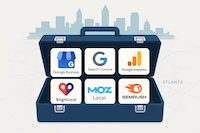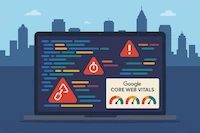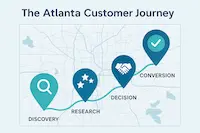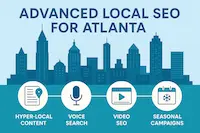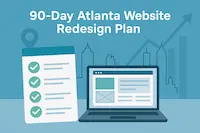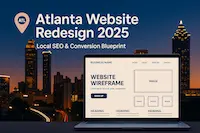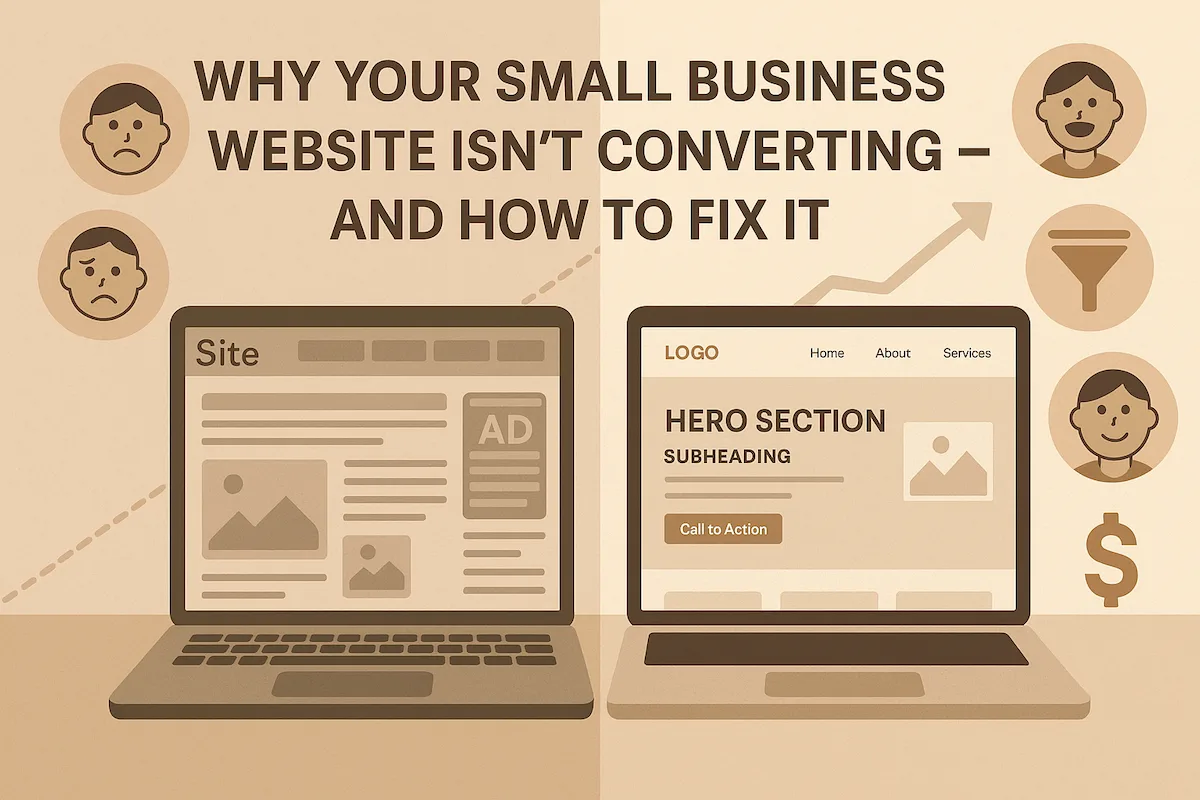
Why Your Small Business Website Isn't Getting Customers (And the 5 Changes That Will Fix It)
Why Your Small Business Website Isn't Getting Customers (And the 5 Changes That Will Fix It)
Introduction:
Your website is your digital storefront, but here's the uncomfortable truth: most small business websites are beautiful brochures that don't actually sell anything.
After analyzing over 500 small business websites in 2025, we've identified a pattern. The businesses that thrive online aren't necessarily the ones with the prettiest websites – they're the ones that understand the psychology of turning website visitors into paying customers.
If your website gets traffic but no phone calls, no form submissions, and no sales, this guide will show you exactly what's broken and how to fix it.
The Hard Truth About Small Business Websites
The Stats That Matter:
- 94% of first impressions are design-related
- 47% of users expect a page to load in 2 seconds or less
- 88% of online consumers are less likely to return to a site after a bad experience
- But here's the kicker: only 3% of website visitors are ready to buy on their first visit
This means your website needs to do more than look good – it needs to nurture the 97% who aren't ready to buy yet.
Problem #1: Your Value Proposition Is Invisible
What We See:
- Generic taglines like "Quality Service Since 1995"
- No clear explanation of what you actually do
- Benefits buried in paragraphs of text
- No differentiation from competitors
The Fix - The 5-Second Rule:
A visitor should understand what you do, who you serve, and why they should care within 5 seconds of landing on your site.
How to Implement:
- Create a Clear Headline: State exactly what you do and for whom.
- Bad: "Welcome to Smith Construction"
- Good: "Custom Home Renovations for Atlanta Homeowners Who Want Quality Without the Hassle"
- Add a Subheadline: Explain the primary benefit.
- "We handle permits, inspections, and cleanup so you can enjoy your new space stress-free"
- Use Bullet Points: List your top 3 benefits prominently.
- ✓ Licensed and insured with 15+ years experience
- ✓ Fixed pricing with no hidden fees
- ✓ Project completion guarantee
Problem #2: Your Website Doesn't Build Trust
Trust Killers We Find:
- No customer testimonials or reviews
- Stock photos instead of real business photos
- No contact information on the homepage
- Broken links or outdated information
- No social proof or credentials
The Trust-Building Formula:
- Real Customer Testimonials (Not Generic Reviews):
Don't just show star ratings. Include specific testimonials that address common concerns:"I was worried about finding a reliable contractor, but TiltStack delivered exactly what they promised, on time and on budget." - Sarah M., Atlanta
- Show Your Face:
- Include photos of your team
- Add a brief "About Us" section on the homepage
- Show your actual workspace or completed projects
- Display Credentials:
- Licenses and certifications
- Years in business
- Industry associations
- Awards or recognition
- Address Common Concerns:
- "Fully licensed and insured"
- "100% satisfaction guarantee"
- "Free, no-obligation consultations"
Problem #3: Your Contact Forms Are Conversion Killers
Common Form Mistakes:
- Too many required fields
- Generic "Contact Us" buttons
- No indication of what happens after form submission
- Forms that don't work on mobile devices
The High-Converting Form Strategy:
- Minimize Fields:
- Only ask for essential information initially
- Name, email, and phone number are usually enough
- You can gather more details in follow-up conversations
- Use Action-Oriented Buttons:
- Instead of "Submit" use "Get My Free Quote"
- Instead of "Send" use "Schedule My Consultation"
- Instead of "Contact Us" use "Start My Project"
- Set Clear Expectations:
- "We'll respond within 24 hours"
- "No spam, we respect your privacy"
- "Get your custom quote in 48 hours"
- Offer Multiple Contact Options:
- Phone number prominently displayed
- Chat widget for immediate questions
- Email for detailed inquiries
- Social media links
Problem #4: Your Website Doesn't Nurture Leads
The Reality:
Most visitors won't contact you immediately. They'll visit 3-5 times before making a decision, and 90% will never return if you don't give them a reason to.
The Lead Nurturing System:
- Create a Lead Magnet:
Offer something valuable in exchange for an email address:- Free consultation
- Downloadable guide ("5 Questions to Ask Before Hiring a Contractor")
- Checklist or template
- Video tutorial
- Implement Email Follow-Up:
- Welcome email with immediate value
- Educational content that builds trust
- Case studies and success stories
- Gentle reminders about your services
- Retargeting Strategy:
- Use Facebook Pixel to track visitors
- Show ads to people who visited but didn't convert
- Offer special promotions to return visitors
Problem #5: Your Website Doesn't Address Customer Concerns
Unspoken Visitor Concerns:
- "Is this company legitimate?"
- "What will this cost me?"
- "How long will this take?"
- "What if I'm not satisfied?"
- "Are they available when I need them?"
How to Address Concerns:
- Create an FAQ Section:
Answer the questions you get asked most often:- Pricing ranges or factors that affect cost
- Timeline for typical projects
- Your process from start to finish
- What happens if something goes wrong
- Show Your Process:
- Step-by-step breakdown of how you work
- Timeline expectations
- What clients need to prepare
- Communication schedule
- Provide Social Proof:
- Before and after photos
- Client success stories
- Industry awards or recognition
- Years in business and projects completed
The Website Elements That Actually Convert
1. Hero Section Checklist:
- [ ] Clear headline stating what you do
- [ ] Subheadline explaining the main benefit
- [ ] Professional hero image (preferably of your work)
- [ ] Clear call-to-action button
- [ ] Trust indicators (years in business, certifications, etc.)
2. Social Proof Section:
- [ ] Customer testimonials with photos
- [ ] Number of projects completed
- [ ] Years in business
- [ ] Industry credentials
- [ ] Before/after photos or case studies
3. Services Section:
- [ ] Clear explanation of what you offer
- [ ] Benefits of each service
- [ ] Pricing information (ranges or starting prices)
- [ ] Call-to-action for each service
4. About Section:
- [ ] Your story and why you started the business
- [ ] Team photos and credentials
- [ ] Your unique approach or philosophy
- [ ] Personal connection to the community
5. Contact Section:
- [ ] Multiple ways to contact you
- [ ] Clear response time expectations
- [ ] Service area information
- [ ] Office location and hours
Mobile Optimization: The Make-or-Break Factor
Mobile-Specific Issues:
- Buttons too small to tap easily
- Text too small to read
- Forms that don't work on mobile
- Pop-ups that can't be dismissed
- Slow loading times on mobile data
Mobile Optimization Checklist:
- [ ] Site loads in under 3 seconds on mobile
- [ ] All buttons are easy to tap (minimum 44px)
- [ ] Text is readable without zooming
- [ ] Forms work properly on touch devices
- [ ] Phone numbers are clickable
- [ ] No horizontal scrolling required
How to Measure What's Working
Key Metrics to Track:
- Conversion Rate: Percentage of visitors who contact you
- Time on Site: How long visitors stay on your pages
- Page Views per Session: How many pages visitors view
- Bounce Rate: Percentage of visitors who leave immediately
- Form Completion Rate: How many people complete your contact forms
Tools to Use:
- Google Analytics (free)
- Google Search Console (free)
- Hotjar for heatmaps and user recordings
- Facebook Pixel for tracking and retargeting
The 30-Day Action Plan
Week 1: Foundation
- [ ] Audit your current website using the checklists above
- [ ] Rewrite your homepage headline and subheadline
- [ ] Add or update customer testimonials
- [ ] Ensure all contact information is current and prominent
Week 2: Trust Building
- [ ] Add professional photos of your team and work
- [ ] Create an FAQ section
- [ ] Display credentials and certifications
- [ ] Add trust badges and guarantees
Week 3: Lead Generation
- [ ] Create a lead magnet (free guide, consultation, etc.)
- [ ] Optimize your contact forms
- [ ] Set up email follow-up sequences
- [ ] Add multiple contact options
Week 4: Optimization
- [ ] Test your website on multiple mobile devices
- [ ] Improve page loading speed
- [ ] Set up tracking and analytics
- [ ] Create a plan for ongoing content updates
Common Mistakes to Avoid
- Trying to Appeal to Everyone:
- Focus on your ideal customer
- Use specific language that resonates with your target audience
- Don't try to be everything to everyone
- Hiding Your Pricing:
- At minimum, provide price ranges
- Explain factors that affect pricing
- Offer free consultations or estimates
- Making People Hunt for Information:
- Put important information above the fold
- Use clear navigation
- Make contact information prominent
- Neglecting Mobile Users:
- Over 60% of web traffic is mobile
- Test everything on actual mobile devices
- Prioritize mobile experience in your design
The Bottom Line
Your website should be your best salesperson, working 24/7 to convert visitors into customers. But like any good salesperson, it needs to understand your customers' needs, address their concerns, and guide them toward a purchase decision.
The businesses that succeed online in 2025 aren't the ones with the flashiest websites – they're the ones that understand the psychology of their customers and create websites that serve their needs.
Your Next Steps:
- Use the checklists in this guide to audit your current website
- Prioritize changes based on potential impact
- Make one improvement per week for the next month
- Track your results and adjust based on what works
Remember, your website is never "finished" – it's a living tool that should evolve based on customer feedback and business results.
Need Help?
If you're feeling overwhelmed by these changes, you're not alone. Many small business owners lack the time or expertise to implement these improvements effectively. At TiltStack, we specialize in creating websites that actually convert visitors into customers, not just look pretty.
This guide was created by the team at TiltStack, a web development agency that specializes in conversion-focused websites for small businesses. We've helped hundreds of businesses transform their websites from digital brochures into powerful sales tools.



